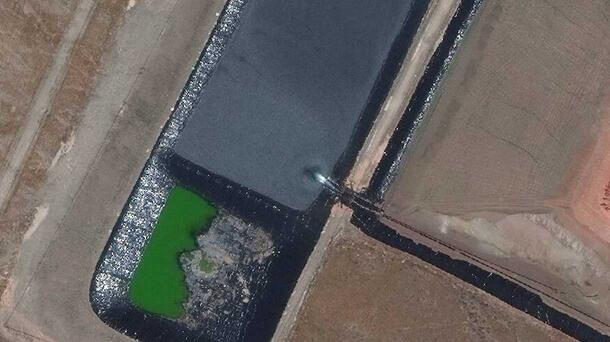Flash Floods: A Guide To Understanding Flood Alerts And Warnings

Table of Contents
Understanding the Difference Between Flood Alerts and Warnings
Knowing the difference between a flood alert and a flood warning is paramount. These terms represent different levels of urgency and impending danger:
-
Flood Watch/Alert: A flood watch or alert means that conditions are favorable for flash flooding to develop. This is not a time to panic, but it is a time to prepare. Think of it as a yellow light – slow down, pay attention, and be ready to react. For example, a prolonged period of heavy rainfall in a region with poor drainage might trigger a flood watch. You should monitor the situation closely and prepare your emergency plan.
-
Flash Flood Warning: A flash flood warning is far more serious. This means that flash flooding is currently occurring or is imminent. This is your red light – immediate action is required. A flash flood warning might be issued after a dam breaks, a levee fails, or exceptionally heavy rainfall saturates the ground rapidly. Evacuation may be necessary.
Sources of Flood Alerts and Warnings
Staying informed is your first line of defense against flash floods. Reliable sources for timely alerts include:
-
National Weather Service (NWS) website and mobile app: The NWS is the primary source of weather information in the United States. Their website and mobile app provide up-to-the-minute forecasts, alerts, and warnings. Sign up for specific alerts for your area.
-
NOAA Weather Radio: NOAA Weather Radio broadcasts continuous weather information, including warnings and alerts, 24/7. This is a highly reliable source, even during power outages.
-
Local news channels (TV and radio): Local news stations often provide up-to-date weather reports and emergency information specific to your area.
-
Weather apps: Numerous weather apps (like AccuWeather, The Weather Channel, and WeatherBug) offer customizable alerts and warnings, often with location-based notifications.
-
Emergency alert system on smartphones (Wireless Emergency Alerts or WEA): Many smartphones automatically receive emergency alerts, including those for flash floods, directly through their cellular service.
How to Respond to Flood Alerts and Warnings
When a flood alert or warning is issued, your response depends on the severity:
-
Flood Watch/Alert: Prepare your emergency kit, review your evacuation plan (if applicable), monitor the weather, and stay informed.
-
Flash Flood Warning: Take immediate action:
-
Move to higher ground immediately. This is the single most important step. Do not wait for the water to approach your location.
-
Never drive through flooded areas – "Turn Around, Don't Drown." Just a few inches of rushing water can sweep a vehicle away.
-
Unplug electrical appliances. This prevents electrical shock and damage from potential flooding.
-
Move valuable items to higher levels. Elevate furniture and other possessions to protect them from water damage.
-
Have an emergency kit readily available. Your kit should include water, non-perishable food, a first-aid kit, medications, flashlights, batteries, and blankets.
-
Follow evacuation orders if given. Do not hesitate to evacuate if instructed by authorities.
-
Creating a Family Emergency Plan
A well-rehearsed family emergency plan is invaluable during a flash flood. This plan should include:
-
Establish a meeting place: Designate a location outside of your home where your family can reunite if separated during a flood.
-
Designate an out-of-state contact person: This person serves as a central point of contact for family members to check in with each other.
-
Plan evacuation routes: Identify multiple escape routes from your home and neighborhood in case primary routes become impassable.
-
Practice the plan regularly: Familiarize your family with the plan and conduct regular drills so everyone knows what to do in an emergency.
Recognizing Flash Flood Warning Signs
Even before an official warning is issued, you might notice signs indicating an impending flash flood:
-
Rapidly rising water levels in rivers, streams, or creeks. A sudden and significant increase in water level is a strong indicator.
-
Heavy or persistent rainfall. Prolonged or intense rainfall, especially in areas with poor drainage, significantly increases the risk of flash flooding.
-
A sudden increase in water flow. Even a small stream or creek can become a raging torrent very quickly during a flash flood.
-
Debris flowing in normally dry areas. The appearance of debris in areas that are usually dry indicates rapidly rising water levels.
Conclusion
Flash floods are a serious threat, but preparedness significantly reduces the risk. Understanding the difference between flood alerts and warnings, knowing where to find reliable information, and having a plan in place are vital steps to staying safe. Remember the crucial response actions: evacuate when necessary, never drive through floodwaters, and secure your home and belongings. Don't be caught off guard by a flash flood. Take the necessary steps today to understand flash flood alerts and warnings and safeguard your family. Create your emergency plan now, sign up for alerts, and learn to recognize the signs of impending danger. Your life may depend on it.

Featured Posts
-
 Nouveau Jeu Rtbf Vivez Le Tour De France Comme Un Manager Cycliste
May 26, 2025
Nouveau Jeu Rtbf Vivez Le Tour De France Comme Un Manager Cycliste
May 26, 2025 -
 Gideon Glick The Breakout Star Of Amazon Primes Etoile
May 26, 2025
Gideon Glick The Breakout Star Of Amazon Primes Etoile
May 26, 2025 -
 Best Office Chair 2025 Our Expert Picks And Buyers Guide
May 26, 2025
Best Office Chair 2025 Our Expert Picks And Buyers Guide
May 26, 2025 -
 L Impact De La Justice Sur La Carriere Politique De Marine Le Pen
May 26, 2025
L Impact De La Justice Sur La Carriere Politique De Marine Le Pen
May 26, 2025 -
 Gravel Tech At Paris Roubaix 2025 Massive Tires And Clever Hacks
May 26, 2025
Gravel Tech At Paris Roubaix 2025 Massive Tires And Clever Hacks
May 26, 2025
Latest Posts
-
 Nba Lifts Ban John Haliburton Returns To Pacers Games
May 28, 2025
Nba Lifts Ban John Haliburton Returns To Pacers Games
May 28, 2025 -
 Promo Samsung Galaxy S25 Ultra 1 To 1294 90 E
May 28, 2025
Promo Samsung Galaxy S25 Ultra 1 To 1294 90 E
May 28, 2025 -
 Achetez Le Samsung Galaxy S25 Ultra 1 To Moins Cher
May 28, 2025
Achetez Le Samsung Galaxy S25 Ultra 1 To Moins Cher
May 28, 2025 -
 Bon Plan Smartphone Samsung Galaxy S25 Ultra 1 To
May 28, 2025
Bon Plan Smartphone Samsung Galaxy S25 Ultra 1 To
May 28, 2025 -
 Offre Limitee Samsung Galaxy S25 Ultra 1 To A 13
May 28, 2025
Offre Limitee Samsung Galaxy S25 Ultra 1 To A 13
May 28, 2025
